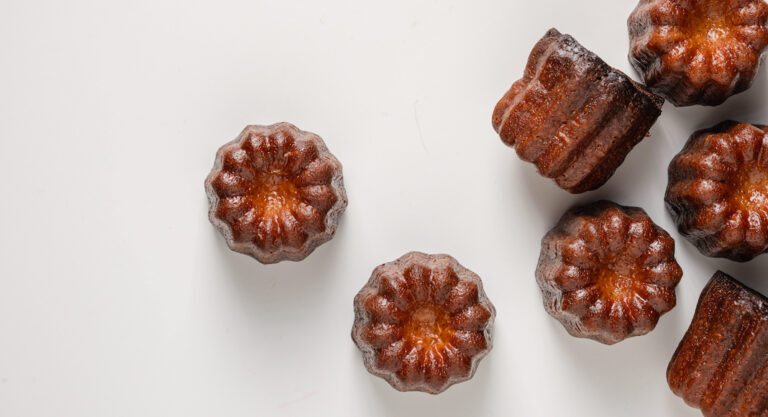Good French bakeries are charming, alluring places, filled with crunchy baguettes, buttery viennoiseries and decadent pastries.
But in France, with boulangeries on every street corner, each offering an abundance of esoteric breads, with rigorous service etiquette to follow, the bakery can quickly become overwhelming for non-French speakers. Here’s how to become a connaisseur du pain in no time.
How to spot a good bakery
The French often say that the best bakery is the one closest to you. After trying bakeries in Paris and Lyon, I disagree. Not all bars serve great wine, not all restaurants serve the best food, and not all bakeries make excellent bread–even if they’re French.
To be called a boulangerie, a French bakery must bake bread on the premises. Boulangeries often display a sticker on the storefront that says “Artisan Boulanger.”
This seal of authenticity means that your baker is the real deal, rather than a depot de pain, a shop that merely sells bread that was baked elsewhere. While some depots are affiliated with well-known boulangeries, most buy and bake industrially-made frozen loaves.
If that’s TMI, you can always go with public opinion: The best boulangeries are the ones with long lines snaking out the door.
Bread
French bread comes in myriad shapes and sizes.
The baguette ordinaire is a cheap and cheerful option. It’s easy to spot, vertically stacked like lumber, it’s brindle brown crisp crust giving way to a white, airy interior. Most cost less than 1€.
The baguette traditionnelle is a step up from ordinaire: It’s usually hand-formed, as evident by the pointy ends and bumps in the loaves. This baguette usually costs a few centimes more than a baguette ordinaire. Some bakeries name their baguette tradition after their bakery, neighborhood, or owner.
You’ll also find the flute (named after the instrument) which is a baguette-shaped item but larger. (In some regions, it is thinner, and then the same as the ficelle).
There’s also the ficelle, meaning wire, a very thin baguette, and the baguette aux céréales, which is baked with seeds and grains and contains more fiber.
The traditional French loaf is the pain de campagne: a thick-crusted loaf with a much longer shelf-life than baguette. Baked with a combination of wholegrain and white flours, this hearty loaf goes well with meat, cheese, soups, and stews.
Pain complet is a whole-grain loaf, pain de seigle is a loaf of rye bread, and pain au levain is sourdough bread.
Boulangeries also frequently offer signature flavored loaves with nuts, olives or figs.
And of course, there are special loaves for the different regions of France. My local bakery offers a loaf with a diamond-shaped pattern on its crust called le vivarais, named after a region in the southeast of France.
Viennoiseries
Once you’ve mastered the different French breads, it’s time to tackle viennoiseries. These are the flaky pastries typically enjoyed over breakfast with coffee. Originally from Vienna, these pate viennoise (viennoiserie dough) are made with a leavened, slightened, sweetened, buttery dough that may also contain eggs.
The king and queen of viennoiserie are, of course, the humble croissant and the universally beloved pain au chocolat.
The pain aux raisins is a variation on the croissant, with sugar and raisins. There’s also the chausson aux pommes — the French equivalent of an apple turnover — and the marzipan-filled croissant aux amandes.
Pain brioche is made from a sweeter dough containing eggs, and tastes similar to challah bread. Some varieties of pain brioche come with bits of chocolate chips, sugar, or praline.
Pastries
Many boulangeries are also pâtisseries, or pastry shops. While each patisserie will offer its own unique creations, there’s a standard array that can be found most everywhere.
Éclairs are a light, hollow choux pastry filled with cream and topped with icing. Most bakeries offer eclairs in many flavors, including chocolate, caramel, and coffee.
Tarte aux fruits are round, miniature, open-faced fruit-tarts that come in many flavors including raspberry (framboise), strawberry (fraise) apple (pomme), and rhubarb (rhubarbe).
My favorite is the Paris-Brest. Created to commemorate a cycling race between the two cities in 1891, it’s made with a donut-shaped choux pastry sliced in half and filled with praline cream.
Most French bakeries also carry the classic pastries that most Americans are familiar with, like choux (cream puffs), madeleines, macarons, and meringues.
Practical advice and etiquette
Many boulangeries are closed on Mondays. The reason for this seeming outrage is that in France, by law, all stores are required to close at least one day a week. Defectors face grave punishments, like this recently punished French baker!
If you prefer your baguette crunchy and over-baked (bien cuite), or soft (pas trop cuite), it is perfectly acceptable to ask.
The French understand the immense challenge of walking home carrying a warm loaf, and not simply gobbling it up on the spot. Le quignon (the heel of the baguette) is the name given to that chunk the buyer rips off to eat on the way home.
When eating a meal in France, bread is never served on a side plate, nor is it balanced precariously beside the main course on the dinner plate. Instead, bread is left directly on the table or table cloth. Crumbs (les miettes) are swept off the table and onto the clean plate at the end of the meal.
Freshly baked bread gets stale quickly, but it is usually good enough to dunk into a bowl of chocolat chaud or café au lait in the morning. Store the rest of your loaf overnight wrapped in a linen towel, and toast it in the morning to revive the texture. Serve with butter, confiture, or Nutella. Bon appétit!





